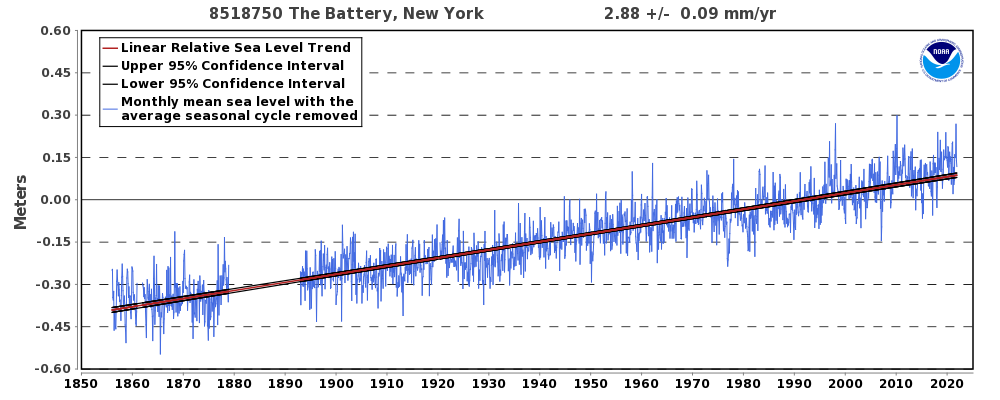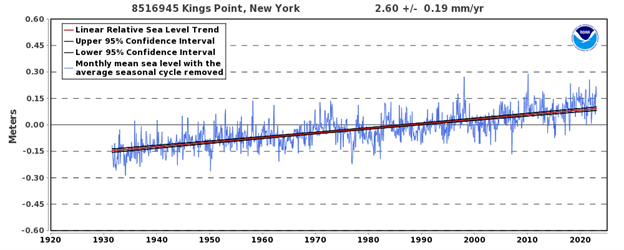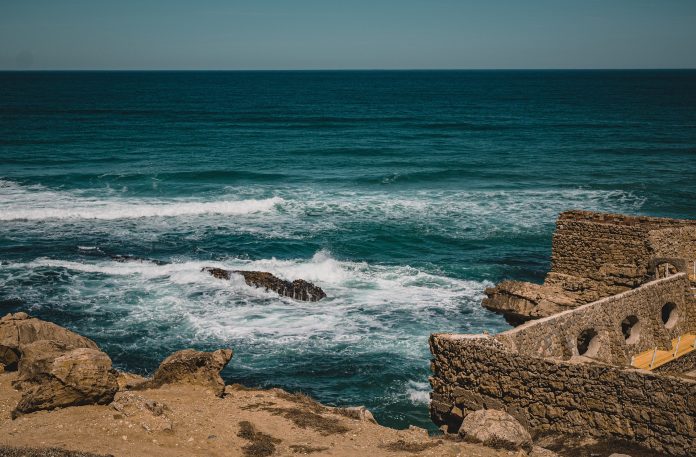A recent piece by CBS News details efforts being made in coastal communities across the United States to mitigate the impact of ongoing sea level rise. The article lays out three methods of dealing with it: constructing structures to keep water out, like sea walls and floodgates; restoring wetlands and dunes to dampen storm surges; and simply picking up and moving away from the encroaching waterline. Although CBS points the finger at climate change for rising sea levels, the fact of the matter is that the majority of sea level rise is entirely natural, and that it’s a good idea to be prepared for it regardless.
The article, “Sea levels are rising — and it’s going to get worse. Here’s how some communities are adapting,” begins by declaring that the recent United Nations Intergovernmental Panel on Climate Change (IPCC) report definitively states that sea level rise is unavoidable, and that sea levels will “remain elevated for thousands of years.”
This may well be true, as sea levels have risen and fallen dramatically over Earth’s history, and global sea level has risen about 400 feet since the end of the last major ice age.
Current NASA satellite measurements, going back to 1993, show a global average sea levels rising at about 1.2 inches per decade, as described in Climate at a Glance: Sea Level Rise.
The CBS article notes that a large number of Americans live near coasts, “while those people don’t have the power to unilaterally solve the underlying problem of climate change, some communities are now grappling with how to adapt to sea level rise by constructing new defenses, restoring natural defenses, or just moving out of the way.”
All three of these methods help mitigate the impact of rising sea levels, depending on the particular coastal conditions.
The first example, expanding on the idea of “constructing new defenses,” the story describes New York’s East Side Coastal Resiliency Project. This is a sea wall construction project that is 2.5 miles long, and just over 16 feet high.
On either side of the East River, sea level rise is different. To the Southwest, tide gauges at The Battery show a sea level rise of about 2.9 mm per year. About twenty miles away Northeast, gauges at Kings Point show a 2.6 mm per year rise. (See figures below)


This demonstrates that aside from rising seas, and whatever minimal amount climate change may be contributing to it, other factors are significant contributors to the rates of “sea level rise” measured at different, often nearby, locations. These factors may be land subsidence, sea floor changes, localized thermal expansion, land compaction, and increased impervious surfaces.
Hardening infrastructure and building sea walls is something coastal communities have done for hundreds, if not thousands, of years. In the East Side project, floodgates will remain open until a flooding event is anticipated, much like how the Dutch have historically handled flooding in their own low-lying country.
The next technique CBS describes is to improve or reconstruct natural features that help dampen the impact of storm surge and flooding. This is a method Climate Realism has previously mentioned in posts here and here, where the importance of natural salt marshes and estuaries is discussed in relation to erosion issues Louisiana faces. Wetlands and marshes are sometimes shortsightedly destroyed to make way for development, including the digging of canals, or dams, or the construction of concrete structures and beaches. This can result in increased flooding, because those natural features which previously slowed or absorbed storm surges and king tides are now compromised or even replaced entirely.
The final solution the CBS article discusses is relocation away from coastal areas threatened by rising seas. The article describes train lines that may be forced to move along the Pacific coast, as the cliffs they were built on erode over time. Cliffs, by the way, that were eroding long before any human habitation in the region occurred.
Climatologist Roy Spencer’s satellite data analysis suggests that human development and energy use may be contributing about three-tenths of an inch to sea level rise per decade. Meaning, anthropogenic climate change is contributing approximately 20 percent to rising seas, the other 80 percent being inexorable and entirely natural.
Regardless of climate change, placing roads and rails on cliffsides along extremely dynamic environments like coastal cliffs, especially those with famously violent wave action due to the steep drop-offs into the depths and prevailing winds that drive waves higher up the shore and increase erosion, is setting that infrastructure up to fail, despite how picturesque the drive is.
Absent any human contribution, seas will continue rising until the next ice age comes, and shores and coastlines will continues changing, sometimes eroding, sometimes adding land. This means that over time, many ill sited cliffside roads, rails, and homes will shift, often falling into the sea.
Human societies have adapted to rising seas throughout history. Such adaptation is still necessary, regardless of climate change. Ancient Rome built unique concrete sea walls whose segments can still be found today, 2,000 years later. The residents of Dunwich, England, continuously moved settlements inland as the sea encroached since at least 1066 AD, until it finally disappeared over the cliffs entirely in 1919. The Netherlands, more than a third of which is below sea level, has battled rising seas throughout its existence. All of this occurred long before anyone could attempt to attribute rising seas to human actions.
CBS’s attempt to attribute the threats posed by rising seas to coastal communities to human caused climate change was misguided. But CBS was right, aggressive infrastructure hardening and construction, reclaiming shorelines natural buffers, and/or relocating from areas where sea level rise is inevitable, makes sense. Only local communities can determine which option or combination of options is best for them in response to localized rates or sea level rise, subsidence, development, and other factors. This is true regardless of any role climate change may be playing in current rate of sea level rise.
















